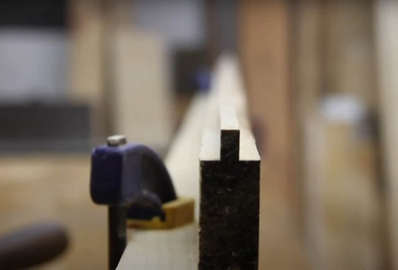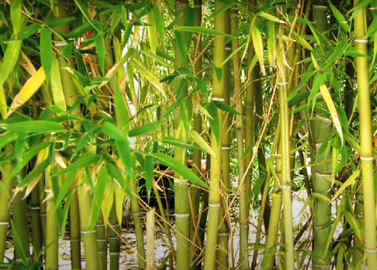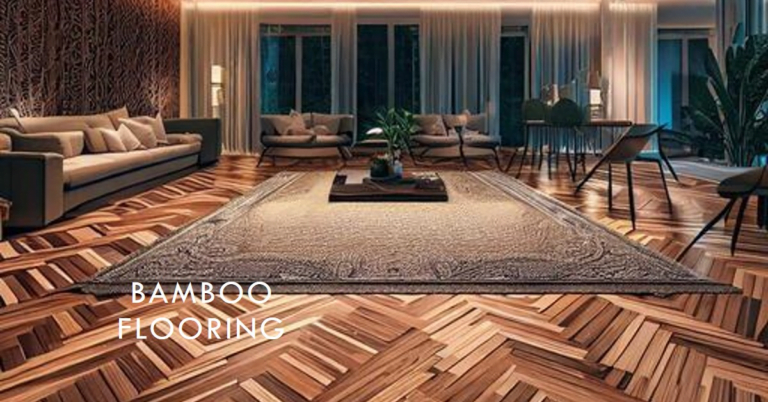How To Get Scratches Out Of Bamboo Floors
At some point, scratches are bound to appear on your bamboo floors. Whether it’s due to moving furniture or pets…
At some point, scratches are bound to appear on your bamboo floors. Whether it’s due to moving furniture or pets roaming around, scratches can be quite unsightly. Luckily, there are ways to remove them without having to replace the entire flooring.
In this article, we’ll share with you some tips on how to get scratches out of bamboo floors and restore your floors to their former glory. The first step in getting scratches out of bamboo floors is identifying the type and severity of the scratch. Some scratches are shallow and only affect the surface, while others are deeper and require sanding.
By understanding the type and severity of the scratch, you can better determine the appropriate method of removing it. With the right tools and techniques, you can say goodbye to scratches and hello to a beautiful bamboo floor once again.
Identifying the Type and Severity of Scratches
It’s important to determine the type and extent of any damage on your bamboo flooring to effectively address the issue. Scratches on bamboo floors can range from surface-level to deep and require different methods of repair.
Surface-level scratches can usually be fixed with simple polishing techniques, while deeper scratches may require more extensive repairs. To identify the severity of the scratches, inspect the damaged area closely and run your fingers over the scratches to check for depth.
If the scratch is only on the surface, it can be easily fixed with a polishing compound or bamboo flooring cleaner. However, deeper scratches will require a more extensive repair, such as filling the scratch with wood filler and sanding it down.
To prevent future scratches, use furniture pads on the bottom of any furniture that comes in contact with the bamboo floors. This will help to avoid any unwanted scratches caused by furniture movement.
Additionally, be sure to clean the floors regularly to prevent any dirt or debris from causing scratches. By taking these preventative measures, you can help to keep your bamboo floors looking their best for years to come.
Sanding to Remove Deep Scratches
You’ll need to sand down the deep marks on your bamboo flooring to restore its smooth surface. Dry sanding and wet sanding are two methods of sanding that can be used in this process.
Dry sanding involves using sandpaper to remove the top layer of the bamboo, while wet sanding involves using water to smooth out the surface. For dry sanding, start with a coarse sandpaper and work your way up to a finer grit. Use a sanding block to ensure even pressure and sand in the direction of the grain. Keep the sandpaper moving to avoid creating grooves in the bamboo.
Once the scratches are smoothed out, switch to a finer grit sandpaper and repeat the process until the surface is smooth. Wet sanding involves using a wet sanding sponge or sandpaper and water to smooth out the surface. This method is less aggressive than dry sanding and is often used for less severe scratches.
Wet sanding can also be used in combination with dry sanding to achieve a smoother finish. Be sure to let the bamboo dry completely before applying any finishes or sealants.
Buffing with Baking Soda and Water Solution
Revive the shine of your beautiful bamboo floors by buffing them with a simple baking soda and water solution. This alternative method is an effective way to remove light scratches and scuff marks without having to sand down the entire floor. However, it’s important to note that this method may not work for deeper scratches or gouges.
To buff out scratches using baking soda and water, start by mixing a solution of 2 tablespoons of baking soda and 1 quart of warm water. Dip a soft cloth or sponge into the solution and wring out any excess liquid. Use the damp cloth to gently buff out the scratches in a circular motion, being careful not to apply too much pressure. Rinse the area with clean water and dry with a clean towel.
Using baking soda and water to buff out scratches has its pros and cons. On the one hand, it’s an affordable and easy solution that doesn’t require any special tools or equipment. On the other hand, it may not be effective for deep scratches or gouges, and it may take some time and effort to get the desired results. However, if you’re willing to put in the time and effort, you’ll be rewarded with beautiful, shiny bamboo floors that look like new again.
| Pros | Cons |
|---|---|
| Affordable | May not work for deep scratches |
| Easy to use | Requires some manual effort |
| Doesn’t require special tools or equipment | Results may vary |
Reviving the shine of your bamboo floors doesn’t have to be a daunting task. With a little elbow grease and a baking soda and water solution, you can buff out light scratches and scuff marks, leaving your floors looking brand new. Whether you’re getting ready to sell your home or you just want to improve its appearance, taking the time to care for your bamboo floors is a worthwhile investment. So next time you notice a scratch on your floors, don’t panic – grab a cloth and some baking soda and get to work!
Filling in Scratches with Wood Filler
Don’t let unsightly scratches ruin the beauty of your beloved bamboo floors, fill them in with wood filler for a flawless finish.
Whether you have pets, kids, or high foot traffic, scratches are bound to happen. Luckily, filling them in is an easy and affordable solution. Before you begin, make sure to find a wood filler that matches the color of your bamboo floors. You can find wood filler at your local hardware store or online.
To fill in the scratches, start by cleaning the area with a damp cloth and allowing it to dry completely. Then, using a putty knife, apply the wood filler to the scratches in a smooth and even manner. Be sure to fill in the entire depth of the scratch.
Once the wood filler is applied, let it dry according to the manufacturer’s instructions. After the wood filler is dry, use a fine-grit sandpaper to sand down the excess filler until it’s level with the rest of the floor.
Finally, clean the area again with a damp cloth and allow it to dry completely before walking on it.
If you’re looking for alternative scratch solutions, consider using a bamboo-specific scratch repair marker. These markers come in a variety of colors and can be used to color in scratches and scuffs. However, keep in mind that this solution is temporary and may need to be reapplied frequently.
For a more permanent solution, filling in the scratches with wood filler is your best bet. With a little effort and some wood filler, your bamboo floors can look as good as new again.
Preventing Future Scratches and Maintaining Your Bamboo Floor
Maintain your bamboo floors and keep them looking their best with some simple strategies to prevent future damage.
One of the most important things you can do is to regularly clean your floors. Avoid using harsh chemicals or abrasive cleaning tools that could scratch the surface. Instead, use a soft-bristled broom or a vacuum cleaner with a hardwood floor attachment to remove dirt and debris.
For more thorough cleaning, use a damp mop with a mild cleaning solution specifically designed for bamboo floors.
Another way to protect your bamboo floors is to use protective measures. Place doormats at entryways to catch dirt and debris before it gets tracked onto the floor. Use furniture pads on the feet of chairs, tables, and other pieces of furniture to prevent scratches when moved.
Avoid wearing high heels or shoes with spikes on your bamboo floors, as they can easily scratch and damage the surface.
Finally, maintain the finish on your bamboo floors by periodically applying a protective coating. This will help to prevent scratches and keep your floors looking shiny and new. Follow the manufacturer’s instructions for application and make sure the room is well-ventilated during the process.
With these simple strategies, you can keep your bamboo floors looking great for years to come.
Conclusion
Overall, getting scratches out of bamboo floors isn’t an impossible task. With the right tools and techniques, you can restore your floor’s original look and prevent future damage.
It all starts with identifying the type and severity of scratches you’re dealing with. From there, you can decide whether sanding, buffing, or filling is the best approach.
In addition to fixing scratches, it’s important to take steps to prevent them from happening in the first place. This can include using furniture pads, avoiding wearing shoes indoors, and sweeping or vacuuming your floors regularly.
By taking good care of your bamboo floors, you can enjoy their beauty and durability for years to come.



